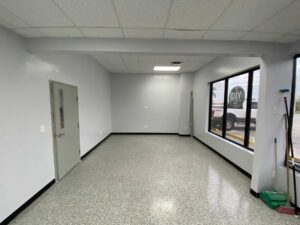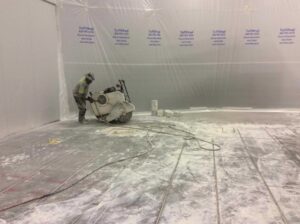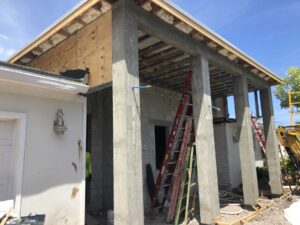There’s a lot that goes into soundproofing a room that will be used as a recording studio, whether it’s a new construction or a renovation. In addition to constructing walls that can block out external noises and trap internal sounds, it’s also important to construct floors and ceilings that can do the same. The location and size of the room are also important, and it also matters what materials are used to successfully soundproof a room for recording. The same applies to doors and any windows present in the room.
Constructing Soundproof Walls

One highly effective way to soundproof walls for recording is to add an extra layer of drywall that’s sealed in place with green glue noise-proofing compound. Not only is green glue noise-proofing compound affordable in most cases, but it is highly effective against noise transmission. As such, it is highly beneficial in significantly reducing outside noise.
In addition to having an extra layer of drywall, another thing to consider is preventing internal sounds from bouncing off walls, which produces an echo. Echoing tends to be more common in larger, more spacious rooms that have a lot of hard surfaces and not enough barriers like furniture to help disrupt the pathways of soundwaves. This also causes sound to amplify as well.
Since echoing can reduce the quality of recorded sound, one highly effective and affordable way to prevent echoing is the installation of foam panels on the drywall. Foam panels come in many different designs and styles, but they are all designed to absorb sound. Absorbing sound also prevents unwanted sound amplification.
Constructing a Soundproof Ceiling and Floor

While it would be ideal to add a second layer of drywall with green glue as the sealant for every ceiling that needs soundproofing, there are, of course, situations in which this won’t produce the best results. This is often dependent on the presence of another floor above room being soundproofed and the type of flooring it has. In some cases, insulation is recommended.
In the case of floors, the most effective way of soundproofing is by creating what is known as a floating floor. Contrary to how that sounds, a floating floor doesn’t actually “float,” but is constructed over resilient mounds between the structural floor and the actual floor. As such, floating floors don’t tend to have a solid foundation, which is ideal for the transmission of vibrations and the absorption of sound. This is somewhat similar to creating a second drywall for ceilings and walls.
Once structure has been accounted for both ceilings and floors, the last thing to address is the prevention of sound amplification and echoing. Like hard-surface walls, sound can also bounce off hard-surface ceilings and floors and would need to be fitted with sound absorption material. In many cases, this is easily achieved by installing acoustic tiles on the ceiling (which are made of the same material as foam panels) and by using carpet instead of tiles or wood in the case of floors.
Soundproofing Doors and Windows
Doors and windows cannot be overlooked
The most affordable and efficient way to soundproof a door is to add weatherstripping to the doorframe on the side the door closes. Weatherstripping creates a seal between the door and frame, which prevents sound from travelling through that space. In addition to weatherstripping, using a door sweep to close the gap between the door and the floor also prevents sound from travelling through that space as well. The more expensive option would be to install a soundproof door.
When it comes to windows, ideally, none would be present in a room that will be used for recording. Sometimes, however, this won’t be the case and the window will need to be worked around. While not the cheapest thing to soundproof compared to a door, it is actually doable. In fact, there are two highly effective ways to soundproof windows: installing impact windows, or the more affordable option of using a window insert.
Impact windows are comprised of sturdy frames made of vinyl, steel or aluminium. They are also comprised of two sheets of glass: exterior tempered glass and interior heat-strength glass with space in between them. This is highly effective for blocking outside noise. The more affordable option of window inserts also serve a similar function.
Often comprised of materials such as plexiglass or acrylic glazing, window inserts have their edges padded with compression tube similar to weatherstripping. They are often custom-made to fit individual windows and are installed from the inside. The compression tube creates a seal around between the window frame and plexiglass/acrylic glazing, while the latter creates a “second layer of glass” with the window glass, with space in between. This helps reduce noise by as much as 70%.
To keep sound from bouncing off the doors and windows, acoustic panels can be installed on the interior side of the door. In the case of windows, sound deadening curtains help absorb sound.
Taylor Builders services the Tri-County area of South Florida. To find out how Taylor Builders can soundproof a room, please visit our services page or reach out to us by filling out our contact form.
